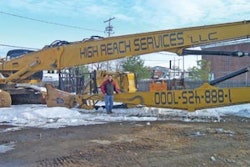
It was December 1993. The economy was humming. The engineering firm I worked at was staying busy with commercial and hospital remodels. Day in and day out, we faced the usual pressures: last minute architectural changes, upcoming bid dates, incomplete shop drawings and urgent RFIs. Pretty standard fare.
Our company enjoyed an excellent reputation among local architects and a strong reputation with building owners. You would think we were sitting pretty. You would think we would be making good money. Not really.
The financial dynamics of the construction market were changing rapidly. It has thrown open the door to design-build delivery.
Late on a Wednesday afternoon, my boss dropped by to unwind a bit. Like most owners, Bob kept financial information to himself. This time, for whatever reason, he started to share some with me. He told me that despite being very busy, we weren't very profitable. He and Tom made an okay living but nothing grand. Nothing like they used to make.
I asked Bob how he and Tom priced our services. He explained that the market was set. We received 4.25% of the estimated mechanical and electrical construction budget regardless of job complexity (MEP fees are supposedly down to 3.5% now). He went on to tell me that our projects typically ran 30% over on man-hours.
That explained why he was feeling a little down. (I later discovered Tom and Bob did not know the reason architects hired us. Their firm had earned a reputation for never missing a deadline. That was unusual among our competition and should have led to better fees.)
The next morning, Tom called all the engineers and designers into the conference room. This was highly unusual. It was only the second time he had done so in my two and a half years there.
Tom thanked us for our hard work and for keeping our clients happy. He then told us that the firm had paid $60,000 to two clients to cover construction costs related to errors and omissions on their designs. Tom and Bob had chosen not to turn those claims in to the insurance company as they were concerned our premiums would rise.
Clients demanding engineers to pay for the correction of their designs was almost unheard of...then. This was not a problem either had faced in the past. Tom and Bob figured this would be a one-time issue.
They were wrong. This was the beginning of a trend that has taken over the industry. Today, engineers and architects are frequently forced to pay for correcting of their mistakes.
Engineers and architects have reacted in the only way they could. They are over-designing everything. The details they draw, the equipment they choose, and the means and methods they require are unnecessary and wasteful.
They are costing your clients a lot of money. This is your opportunity to push design-build.
There are two keys to building a large design-build practice. The first key is you've got to deliver the quality your client wants. The second key is you've got to drive a wedge between owners and designers.
I have been involved with some large design-build projects over the years, most recently when assisting an owner on a $100 million prison. By project end, most members of the ownership team were of the opinion the design-build contractor would cut any corner to save a buck.
This has been the one thing preventing design-build from taking over the construction industry. Too many design-build contractors cut corners at their client's expense. Design-build requires a willingness to build things right.
Which brings us to the second key. Architects and engineers often don't build things right. They over-build. That's not right.
The significant benefits of design build are:
- Budget control (should be limited change orders).
- Better value for the dollar (less over design).
- Shorter duration from concept to completion.
Designers are starting to come around. Even though they don't like losing control of the client, many are beginning to realize that by working under the contractor they are greatly reducing financial charges for errors and omissions. As they pay 25 times their design fee to fix the mistakes they make, their incentive to work directly underneath contractors has become impossible to ignore. They don't like the option, but they can't turn their back on it either.
Even in this harsh 2009 economy with incredibly competitive pricing (incredibly unrealistic and stupid pricing that is) clients would be better off choosing design-build delivery.
Someone's got to show owners the truth. You can bet the design teams aren't going to. You need to. It may be your only hope for landing negotiated work in today's economy.



















